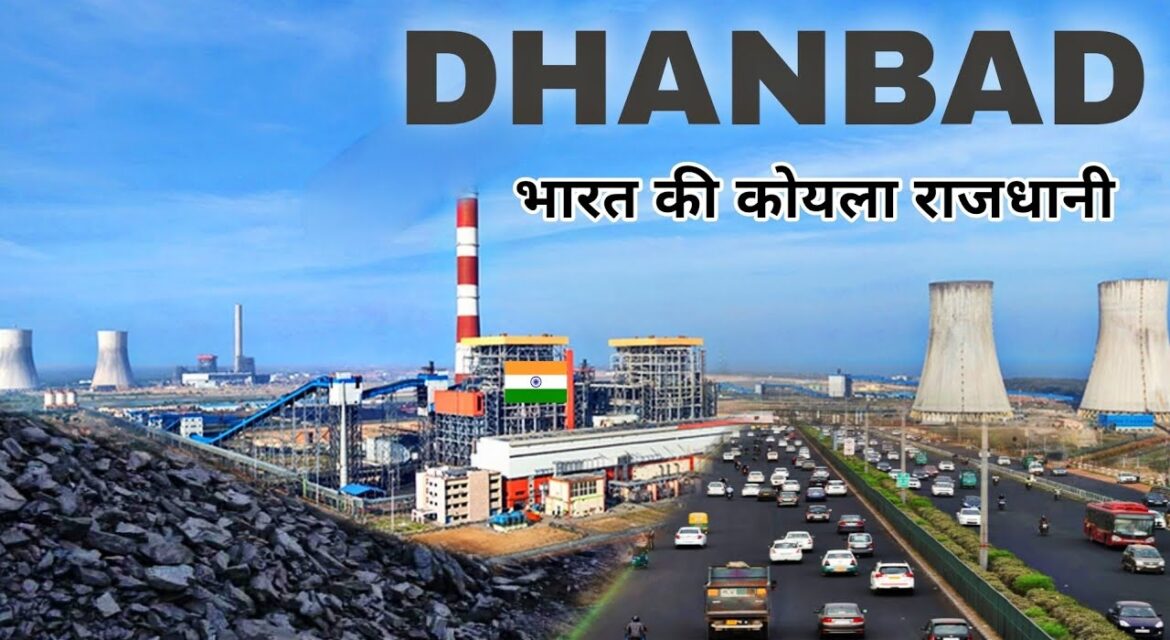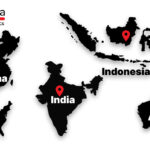Coal Capital aptly describes the vibrant city of Dhanbad in Jharkhand, India. Renowned as the backbone of the Indian coal industry, Dhanbad has been a hub of coal mining activities and is pivotal in meeting the nation’s energy demands. Its vast coal reserves and robust mining infrastructure make it a vital player in India’s energy sector. In this blog, we delve into why Dhanbad is known as the Coal Capital, its contribution to the Indian coal industry, and its significance in the global coal market.
Why is Dhanbad Called the Coal Capital of India?
Dhanbad earned the title of Coal Capital due to its enormous coal reserves, world-class mining operations, and historical significance in India’s coal industry.
Key Highlights:
- Abundant Coal Reserves:
- Dhanbad is home to some of the wealthiest coalfields in the country, including the Jharia coalfield, which holds high-quality coking coal essential for steel production.
- The reserves are vital for industrial and domestic energy generation, constituting India’s energy ecosystem.
- Industrial Hub:
- The city has a well-established network of coal mines, power plants, and industries dependent on Indian coal.
- This industrial infrastructure is critical in supporting India’s energy and manufacturing sectors.
- Educational Excellence:
- Institutions like the Indian School of Mines (IIT-ISM) in Dhanbad further bolster the city’s reputation.
- These institutions contribute to advancements in mining technology and the development of a skilled workforce, cementing Dhanbad’s role as a knowledge hub for the coal industry.
Coalfields in and Around the Coal Capital of India.
Dhanbad’s prominence as the Coal Capital stems from its access to vast coalfields, which are integral to the production of Indian coal. These coalfields ensure that Dhanbad remains at the forefront of coal production in India.
Major Coalfields:
- Jharia Coalfield:
- Renowned for its high-quality coking coal, Jharia is critical for industries like steel manufacturing.
- Known for open-cast and underground mining operations, it has been a key contributor to India’s coal production for decades.
- East Bokaro Coalfield:
- Located near Dhanbad, it complements the city’s mining activities.
- It supplies thermal coal for power generation and addresses the energy needs of various regions nationwide.
- Raniganj Coalfield:
- Although extending into West Bengal, it supports Dhanbad’s coal mining ecosystem and provides coal for diverse applications.
- It plays an essential role in maintaining a steady coal supply chain.
- North Karanpura Coalfield:
- Supplies both coking and thermal coal, contributing to Dhanbad’s overall industrial output.
- Its strategic importance lies in supporting multiple industries with varied coal requirements.
Contribution of Indian Coal from Dhanbad to the National Energy Sector
The Coal Capital contributes significantly to India’s coal production, ensuring a steady supply of energy resources for various industries. This contribution underlines its critical role in sustaining India’s growth trajectory.
Key Contributions:
- Energy Generation:
-
-
- Dhanbad supplies coal to power plants nationwide, fueling thermal energy production that constitutes over 70% of India’s electricity.
- The consistent coal supply ensures minimal disruption in power generation across the country.
-
- Steel Industry Support:
-
-
- High-grade coking coal from Jharia is essential for steel production, making Dhanbad pivotal in infrastructure development.
- The steel industry relies heavily on coal from this region for its operations.
-
- Industrial Applications:
-
- Coal from Dhanbad is utilised in the cement, aluminium, and fertiliser industries, underscoring its importance across diverse sectors.
- The coal’s versatility ensures that industries dependent on energy-intensive processes remain operational.
- Export Potential:
-
- Indian coal mining in Dhanbad is exported to neighbouring countries, boosting India’s presence in global coal markets.
- The coal export industry generates substantial revenue, adding to the region’s economic significance.
Technological Advancements in the Coal Capital of India.
As the Coal Capital of India, Dhanbad is a mining hub and a centre for innovation and technology in coal extraction. Modern technologies are redefining how coal is mined, processed, and utilised.
Modern Practices:
- Automated Mining:
- Advanced machinery and automated systems have made coal mining safer and more efficient.
- These technologies ensure that extraction processes are optimised for maximum productivity.
- Digital Monitoring:
- Sensors and IoT devices track mining operations in real time, improving productivity and reducing risks.
- Real-time data allows for better decision-making and resource management.
- Skill Development:
- Institutions like IIT-ISM contribute significantly to the training of professionals in cutting-edge mining techniques.
- A skilled workforce ensures Dhanbad’s coal industry’s sustained growth and innovation.
- Infrastructure Improvements:
- Enhanced transportation networks, including railways and roadways, streamline coal distribution to various parts of India.
- These infrastructure advancements ensure timely delivery and minimise logistical delays.
Economic Impact of Dhanbad as the Coal Capital of India.
Dhanbad’s economic influence extends beyond coal mining. As a hub for Indian coal, its activities support a range of industries and livelihoods, fostering economic growth in the region and beyond.
Key Economic Contributions:
- Employment Generation:
- Mining companies employ thousands, directly and indirectly supporting local economies.
- The coal sector is a significant source of livelihood for people in and around Dhanbad.
- Industrial Growth:
- The availability of coal fosters the development of industries, power plants, and ancillary businesses.
- This industrial growth contributes to India’s overall GDP.
- Revenue Generation:
- Taxes and royalties from mining activities contribute significantly to state and national revenue.
- The coal industry is a significant income source for public and private stakeholders.
- Urban Development:
- Dhanbad’s economic strength drives investments in infrastructure, education, and healthcare.
- The city’s prosperity has a ripple effect, improving the quality of life for its residents.
Comparative Analysis of Coal Capitals Globally
To understand Dhanbad’s significance, comparing it with other coal-rich cities worldwide is helpful.
|
Coal Capital |
Country | Annual Production (MT) | Key Features |
| Dhanbad | India | 150 | Jharia coalfield, high coking coal |
| Newcastle | Australia | 160 | Leading thermal coal exporter |
| Shanxi Province | China | 900 | Largest coal-producing region in China |
| Kuzbass Region | Russia | 250 | Major exporter to Europe and Asia |
| Appalachia | United States | 250 |
Focus on metallurgical coal |
Source: International Energy Agency (2024).
Conclusion: The Role of Rawalwasia Group in Indian Coal
The Coal Capital of India, Dhanbad, symbolises India’s energy strength and industrial prowess. With its vast coal reserves, cutting-edge technology, and significant contributions to national development, Dhanbad is pivotal to sustaining India’s energy needs.
Rawalwasia Group, a leading name in the Indian coal industry, plays a crucial role in this ecosystem. Rawalwasia Group supports energy generation, steel production, and other critical applications by sourcing and supplying premium-quality coal to diverse industries. Their commitment to reliability and efficiency ensures they remain a trusted partner in India’s energy sector.
As India moves toward a balanced energy future, the contributions of the Coal Capital of India and entities like the Rawalwasia Group will remain vital in bridging traditional energy demands with modern advancements.






